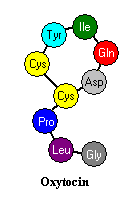Ramsey Clark and Fair Trials
Ramsey Clark, the one-time US Attorney General under the Johnson Administration, has joined the defense team in the trial of Saddam Hussein in Iraq.
I met Ramsey Clark in the 90's, when he showed up to defend the late Phil Berrigan and the Prince of Peace Plowshares.
Clark has labored long and hard to ensure that anti-war activists got a fair hearing in the US criminal courts. His efforts, I am sorry to say, were largely in vain.
What interests me about the trial of Saddam Hussein isn't the characters who are in the dock, but the venue.
Iraq is the modern day country that claims to be the cradle of Western Civilization. The Garden of Eden is presumed to represent the Fertile Crescent between the Tigris and Euphrates Rivers, where humans first began to till the soil and domesticate their livestock at the dawn of the Agrarian Culture, some ten thousand years ago.
The advent of the Agrarian Culture brought with it the notion of ownership (of land and the fruits of the land), and the institutionalization of commerce and trade. Hammurabi of Babylonia is remembered today as one of the early founders of the Rule of Law, some 3750 years ago.
The Rule of Law is in some disarray these days, partly from political corruption and partly from systemic flaws in the concept itself. Corrupt rulers are ubiquitous in the annals of history. But the systemic flaws in the Rule of Law itself are more difficult to fathom, since they correspond to subtle errrors in mathematical reasoning. Hammurabi was hardly a mathematician, and so he can be excused for crafting a flawed system.
Indeed, we had to wait for modern mathematicians like Poincaré to reveal that Law and Order is a pipe dream.
Today, most educated people have at least heard of Chaos Theory, even if they haven't read James Gleick's book on the subject. What we learn from Chaos Theory is nothing short of an astonishing revelation. Rule-driven systems are not inherently orderly, stable, and predictable (as almost everyone blithely assumes or imagines). Rule-driven systems are inherently chaotic (in the technical mathematical sense of the term). In street language, a better term would be high drama.
The NBC series, Law and Order, is really about Hammurabism and Drama. The Hammurabic Method of Social Regulation is one of the most reliable sources of high drama known to journalists and scriptwriters.
One of these days, a courtroom trial (such as the one in Iraq) will reveal the mathematical truth about Hammurabism to the general public. And when that happens, a major myth will be shattered — the myth of Law and Order.
And then, just maybe, Western Civilization will begin to evolve to the next stage — the search for more functional methods of social regulation.
I met Ramsey Clark in the 90's, when he showed up to defend the late Phil Berrigan and the Prince of Peace Plowshares.
Clark has labored long and hard to ensure that anti-war activists got a fair hearing in the US criminal courts. His efforts, I am sorry to say, were largely in vain.
What interests me about the trial of Saddam Hussein isn't the characters who are in the dock, but the venue.
Iraq is the modern day country that claims to be the cradle of Western Civilization. The Garden of Eden is presumed to represent the Fertile Crescent between the Tigris and Euphrates Rivers, where humans first began to till the soil and domesticate their livestock at the dawn of the Agrarian Culture, some ten thousand years ago.
The advent of the Agrarian Culture brought with it the notion of ownership (of land and the fruits of the land), and the institutionalization of commerce and trade. Hammurabi of Babylonia is remembered today as one of the early founders of the Rule of Law, some 3750 years ago.
The Rule of Law is in some disarray these days, partly from political corruption and partly from systemic flaws in the concept itself. Corrupt rulers are ubiquitous in the annals of history. But the systemic flaws in the Rule of Law itself are more difficult to fathom, since they correspond to subtle errrors in mathematical reasoning. Hammurabi was hardly a mathematician, and so he can be excused for crafting a flawed system.
Indeed, we had to wait for modern mathematicians like Poincaré to reveal that Law and Order is a pipe dream.
Today, most educated people have at least heard of Chaos Theory, even if they haven't read James Gleick's book on the subject. What we learn from Chaos Theory is nothing short of an astonishing revelation. Rule-driven systems are not inherently orderly, stable, and predictable (as almost everyone blithely assumes or imagines). Rule-driven systems are inherently chaotic (in the technical mathematical sense of the term). In street language, a better term would be high drama.
The NBC series, Law and Order, is really about Hammurabism and Drama. The Hammurabic Method of Social Regulation is one of the most reliable sources of high drama known to journalists and scriptwriters.
One of these days, a courtroom trial (such as the one in Iraq) will reveal the mathematical truth about Hammurabism to the general public. And when that happens, a major myth will be shattered — the myth of Law and Order.
And then, just maybe, Western Civilization will begin to evolve to the next stage — the search for more functional methods of social regulation.










